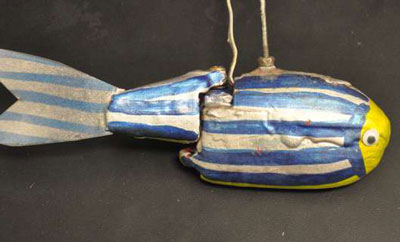| Nov 20, 2012 |
Robotic fish research swims into new ethorobotics waters
|
|
(Nanowerk News) Researchers at the Polytechnic Institute of New York University (NYU-Poly) have published findings that further illuminate the emerging field of ethorobotics -- the study of bioinspired robots interacting with live animal counterparts.
|
|
Maurizio Porfiri, associate professor of mechanical and aerospace engineering at NYU-Poly, doctoral candidates Vladislav Kopman and Jeffrey Laut and research scholar Giovanni Polverino studied the role of real-time feedback in attracting or repelling live zebrafish in the presence of a robotic fish.
|
 |
|
Their findings, published in the Journal of the Royal Society Interface ("Closed-loop control of zebrafish response using a bioinspired robotic-fish in a preference test"), show that zebrafish demonstrate increased attraction to robots that are able to modulate their tail motions in accordance with the live fishes' behavior.
|
|
The researchers deployed image-based tracking software to analyze the movement of the live zebrafish and provide real-time feedback to the robot. Porfiri and his colleagues found that zebrafish were most attracted to the robotic member when its tail beating motion replicated the behavior of "informed fish" attempting to lead "naive fish." When the robotic fish increased its tail beat frequency as a live fish approached, the zebrafish were likeliest to spend time near the robot.
|
|
This study shows the effectiveness of real-time visual feedback in efforts to use robots to influence live animal behavior. The findings may have particular application in wildlife conservation, where robotic members may be utilized to steer live animal or marine groups from dangerous conditions.
|

